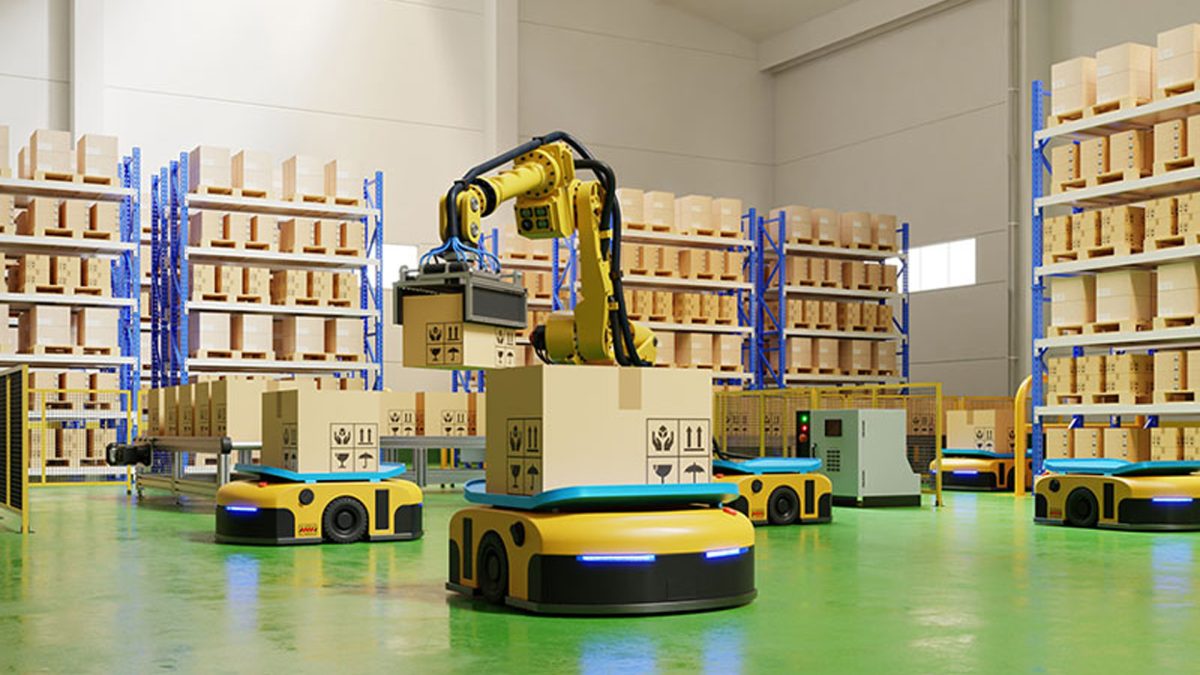The global warehouse robots market is expected to reach $ 4,924.3 million in 2033, according to Future Market Insights (FMI). From 2023 to 2033, it is expected to grow at a CAGR of 13.7 per cent. By 2023, the market is anticipated to be worth $1,365.8 million.
Due to the exploding demand for consumables and perishable goods across numerous industries, such as electronics, automobiles, and e-commerce, warehouse automation is growing quickly. It is advantageous for the robotics market because the warehousing sector is looking to manufacturers for integrated robotics solutions to speed up product delivery to customers.
Demand for robots that are inexpensive and easy to use is increasing due to the significant development in independent and small-scale warehouses. Mix-volume production across locations has increased the need for robots in warehouse duties.
Due to changing demographics and widespread internet access, there is an increase in demand for products sold through online sales channels. Globally, there is a growing need for new e-commerce warehouse construction, which presents various opportunities for automation. Industrial robots accounted for between 3 per cent and 5 per cent of the global market in 2022.
In 2021, the industrial robots market experienced a significant expansion, and over the projected period, the trend is anticipated to continue. The International Federation of Robotics estimates that the number of industrial robots installed annually climbed to 517,000 units in 2021 from 394,000 units the year before. From 2020 and 2021, it showed a growth of around 30 per cent.
In Asia Pacific, the top markets for industrial robot sales are still China, Japan, South Korea, and the Association of Southeast Asian States. Robots are predicted to have profitable potential in warehouse tasks as a result of a key rise in terms of the usage of robots across industries.
Top warehouse robotics market trends listed by Future Market Insights (FMI)
· The conventional storage approach finds it difficult to keep up with the unpredictable shopping patterns and increased expectations of today’s internet users.
· New improved technologies are being used by several distribution centres to increase total output, accuracy, and efficiency.
· E-commerce has an impact on worker requirements across industries, not simply warehousing and logistics firms.
· Demand for workforce in the warehousing and logistics sector is significantly impacted by the e-commerce sector’s explosive rise.
· As a result, businesses are facing trouble meeting the increased demand for personnel.
· In order to attract and keep employees, businesses must raise wages and provide more extensive benefits.
· Retailers grappling with growing workforce expenses, shipment delays, and stock outs are experiencing the effects of this knock-on effect.
· Automation is nowadays a part of the aircraft sector owing to developments in robotic technology.
· Ergonomic problems brought on by humans performing repetitive tasks were decreased as a result of the usage of warehouse robots to evaluate applications.
· End users frequently handle large, heavy components in the aerospace sector.
· As a result, high payload robots equipped with sensors are used.
· A few advantages of warehouse robots include temporary cleaning and wiping of parts without shutting down the entire system and excluding the fencing.
· A robotic system must be more precise, adaptable, and quick in the electronics sector.
· Traditional robots in this industry’s assembly applications require substantial deployment costs and human support.
· While for the same activity, warehouse robots can be used for a far lower cost.
· Healthcare, food & agriculture, plastics & polymers, pharmaceuticals & chemistry, furniture & equipment, and science & research are a handful of industries that warehouse robots support.
· Technological development and automation trends in these industries are essential drivers of market expansion.
· Specially designed warehouse robots are being extensively used across the globe.
· Mobile robots that are lightweight and portable and can travel between sections of warehouses are becoming increasingly popular among market participants in the manufacturing sector.
· Significant advancements in warehouse robot technology promise to boost productivity and growth across a wide range of industries in the next ten years.
· The range of applications that end users can undertake will be expanded by advances in gripper and sensor technologies.
By 2033, the market is anticipated to expand due to increased demand from retailers and e-commerce businesses. It is predicted that full-lifecycle management of returned and recycled goods would open up significant prospects for robotic solutions in inventory control. Due to supply chain optimisation, demand for robotics in warehouse activities is also projected to increase, according to a lead analyst.
Competitive Landscape: Warehouse Robotics Market
Increasing automation in cold storage facilities is estimated to create significant growth opportunities for the warehouse robotics industry over the forecast period. The top five prominent players in the global warehouse robotics industry are ABB Ltd, KION Group, FANUC Corporation, KUKA AG, and Daifuku.
Several companies and new robot start-ups are focusing on innovative and technologically advanced solutions for warehouses in order to increase efficiency. Prominent players are engaging in acquisition strategies. They are also involved in innovative and integrated robots to meet end user requirements. Companies are focusing on new project launches for warehouses, especially in developing countries. It is attributed to rising demand for third-party logistics. Manufacturing companies are also focusing on new product launches and acquisition strategies.
